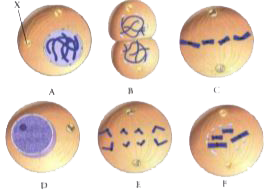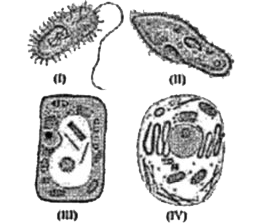Answer the following questions.
Does it represent a plant cell or an animal cell?
To determine whether the cell in question represents a plant cell or an animal cell, we can follow these steps:
1. Identify Key Features: Start by identifying the key features that distinguish plant cells from animal cells. The primary differences include the presence of a cell wall, chloroplasts, and large central vacuoles in plant cells, while animal cells typically have only a cell membrane.
2. Check for Cell Wall: Look for the presence of a cell wall. If the cell has a rigid outer structure, it is likely a plant cell. If there is only a cell membrane, it is likely an animal cell.
3. Look for Plastids: Examine if there are any plastids (like chloroplasts) present in the cell. Chloroplasts are found only in plant cells and are responsible for photosynthesis.
4. Examine Vacuoles: Observe the size and number of vacuoles. Plant cells usually have one large central vacuole, while animal cells may have smaller vacuoles.
5. Identify Other Organelles: Check for the presence of organelles like mitochondria and endoplasmic reticulum. Both types of cells have these organelles, but their presence alone does not determine the type of cell.
6. Conclusion: Based on the observations, if the cell lacks a cell wall and plastids, and has only a cell membrane, it can be concluded that the cell is an animal cell.
Final Answer:
The cell in question represents an animal cell because it does not have a cell wall or plastids, which are characteristic features of plant cells.
The cell in question represents an animal cell because it does not have a cell wall or plastids, which are characteristic features of plant cells.
Topper's Solved these Questions
- CELL-STRUCTURE AND FUNCTIONS Book:NCERT EXEMPLARChapter:CELL-STRUCTURE AND FUNCTIONS Exercise:LONG ANSWER QUESTIONS
Explore 3 Videos
- CELL-STRUCTURE AND FUNCTIONS Book:NCERT EXEMPLARChapter:CELL-STRUCTURE AND FUNCTIONS Exercise:VERY SHORT ANSWER QUESTIONS
Explore 6 Videos
- COAL AND PETROLEUMBook:NCERT EXEMPLARChapter:COAL AND PETROLEUMExercise:LONG ANSWER QUESTIONS
Explore 9 Videos
Similar Questions
Answer the following questions.
Does it represent a prokaryotic cell or an eukaryotic cell?
View SolutionThe diagrams below show cells in various phases of the cell cycle. Note the cells are not arranged in the order in which the cell cycle occurs. Use these diagrams to answer the following questions.

(i) Are the cells depicted plant or animal cells?
(ii) Explain your answer.
View Solution
Knowledge Check
Which one of the following is found in plant cells but not found in the animals cells ?
ACell wallBMitochondriaCCell membraneDNucleusWhich of the following cell organelle is present in both plant and animal cell?
ACell wallBLysosomesCChloroplastsDMitochondriaWhich of the following cell organelle is present in both plant and animal cell?
ACell wallBLysosomesCChloroplastsDMitochondria

Which figure represents a plant cell?
View SolutionList two differences between a plant cell and an animal cell.
View SolutionA group of plants lacks photorespiration. Answer the following questions based on these plants:
a) Which cells in the plant have Rubisco?
b) Does photorespiration occur in these plants?
c) In which cells the CO2 fixation initially occurs.
View SolutionPlant cell differs from animals cell by
View SolutionWhich cell structure is present in plant cells but not in animal cells ?
View Solution